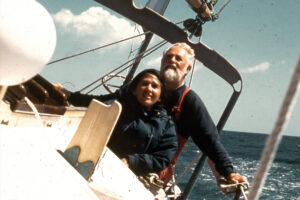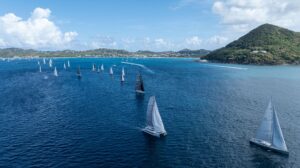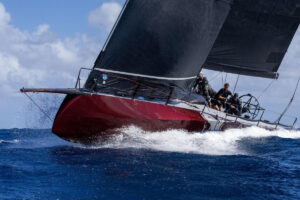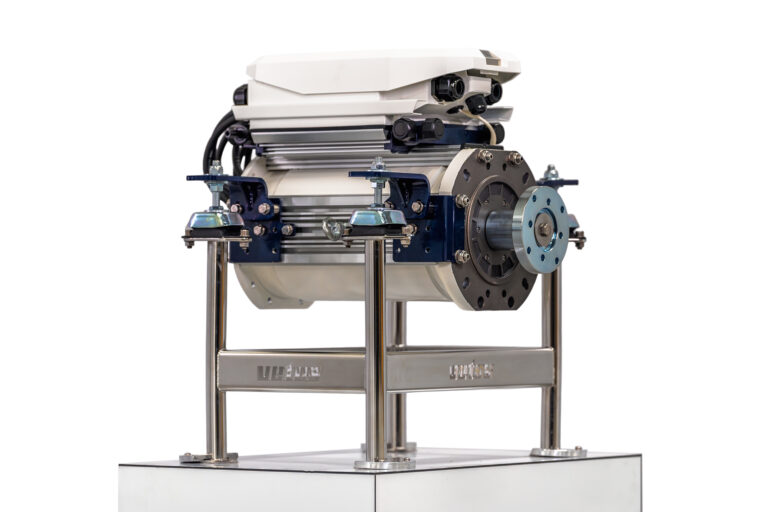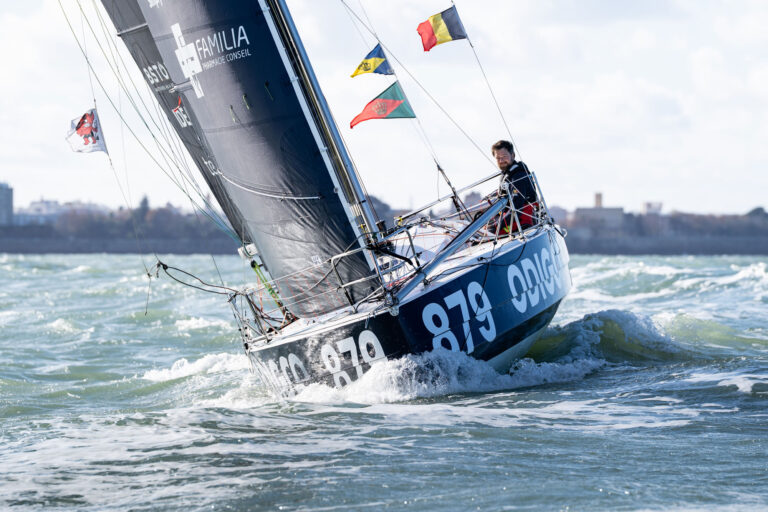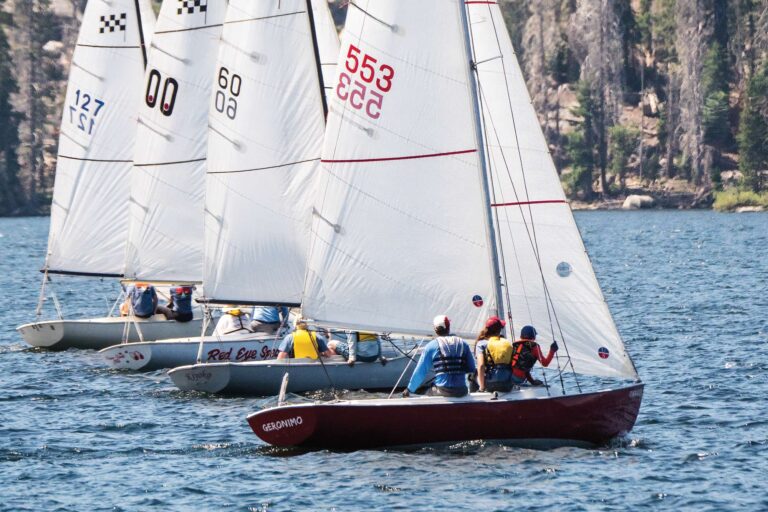
In the early 1980s, Stevens Yachts built 56 Stevens Custom 47s at Queen Long Shipyard in Taiwan before selling the molds to the yard, which continued to build it as the Hylas 47 and, later, as the Hylas 49.
The Sparkman & Stephens-designed Stevens 47 has a solid-fiberglass hull and a balsa-cored deck. It’s beamy, but the powerful cutter rig, low-deadrise hull, and elongated fin keel put it among the faster cruisers of its era. The hull’s sharp entry eliminates pounding in all but the heaviest weather, and its easy motion in a seaway is attributable in part to the fact that the weights of such major components as the engine, which is well forward under the cockpit, are centered well away from the ends.
Belowdecks, the tone is set with teak: solid teak, teak veneer, and a very solid teak-and-holly sole. Passages to port and starboard of the companionway, each with just over 6 feet of headroom, connect the saloon to the large master stateroom and aft head. The galley occupies the port walkway; to starboard is a full, forward-facing nav station. The engine, beneath an ample “kitchen” counter under the cockpit well, is fully accessible on three sides.
Four can dine comfortably around the saloon’s L-shaped table, six with the leaf extended. Above and outboard of each settee are pilot berths, a feature that makes the saloon narrow-not at all in the current vogue, but much safer for walking around when you’re in a seaway. Most owners have converted the berths into additional cruising storage.
Forward of the saloon, the layout includes a head with shower to starboard, a stateroom with two bunk beds to port, and a forward stateroom with a large V-berth.
Six hatches of various sizes, 14 opening portlights, and five closable dorade vents provide ventilation.
Water tanks occupy the space under the saloon settees, but ample storage is provided under the pilot berths. Each stateroom has a hanging locker, and enough space is available that some can be used for adding equipment.
The boat’s large, skeg-hung rudder is supported by three bearings; the bottom one is located well above the heel of the skeg to prevent jamming the rudder during a hard grounding. Under power in forward, the boat can turn around in about twice its length, but in reverse at low speed, it tends to back into the wind.
The tall cutter rig provides both great light-air performance and flexibility for heavy weather. With the usual masthead toys, it measures just over 65 feet.
Before we purchased her, our Stevens Custom 47, Aquila, spent two years in charter and had been badly maintained for 17 years. But there are no signs of blistering below the waterline, and the neglected deck and topsides responded beautifully to a complete application of Awlgrip.
One or two Stevens Custom 47s always seem to be available. Asking prices, depending on condition and equipment, have held steady at about $200,000 over the past decade.
John MacEvoy and Mary Ann Capria have spent the past 10 years restoring and converting Aquila, the Stevens Custom 47 they purchased in 1998, into a comfortable liveaboard cruiser.
Stevens custom 47
LOA 46’10” (14.27m.)
LWL 37’9″ (11.51m.)
Beam 14’3″ (4.34m.)
Draft 6’0″ (1.83m.)
Sail Area (100%) 1,051 sq. ft. (97.6 sq m.)
Ballast 14,500 lb. (6,576 kg.)
Displacement 32,000 lb. (14,512 kg.)
Ballast/D .45
D/L 266
SA/D 16.7
Water 200 gal. (758 L.)
Fuel 115 gal. (436 L.)
Engine 65-hp. Ford Lehman
Designer Sparkman and Stephens

